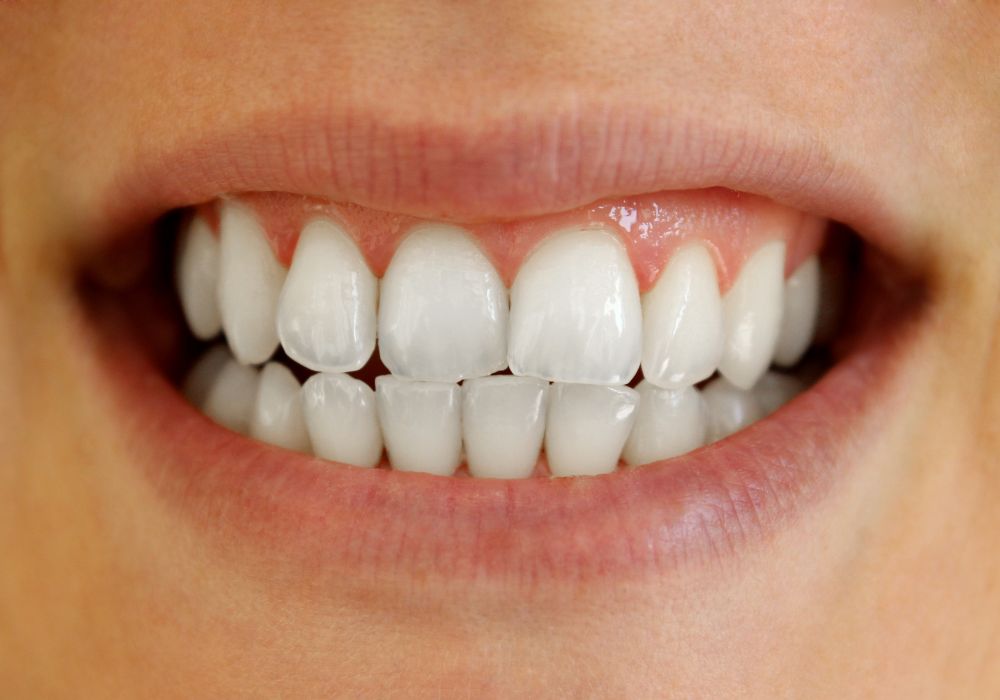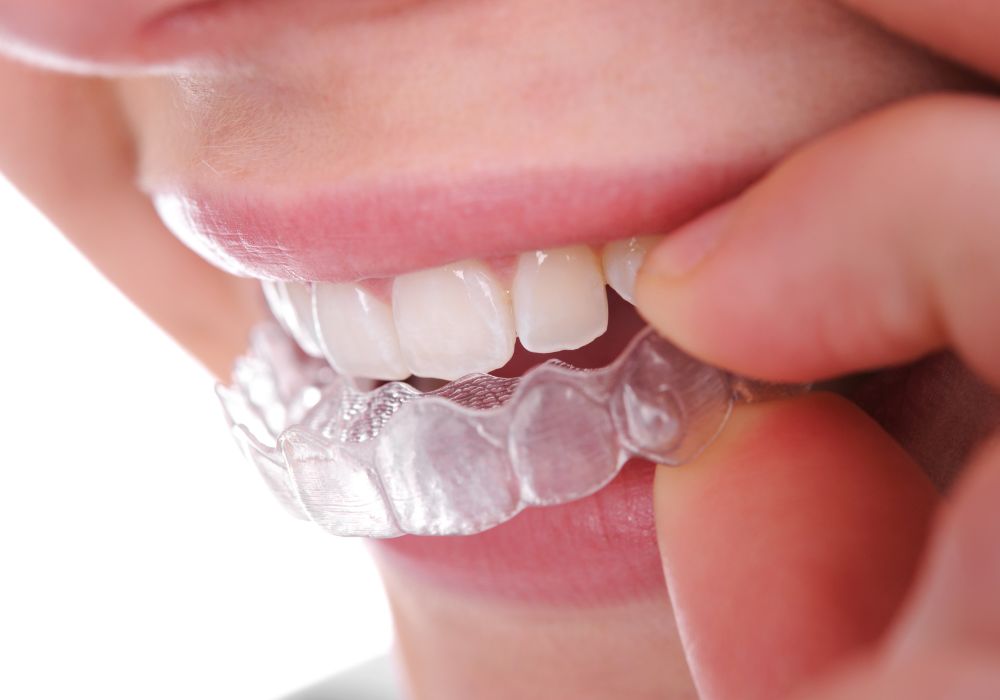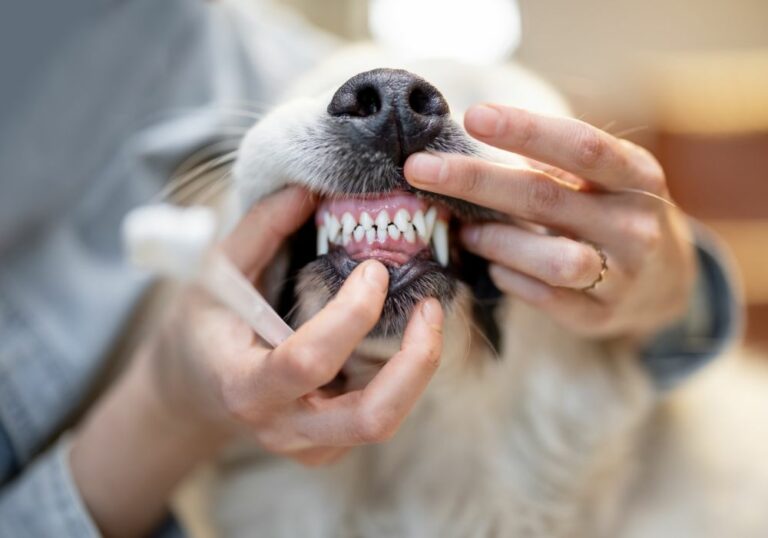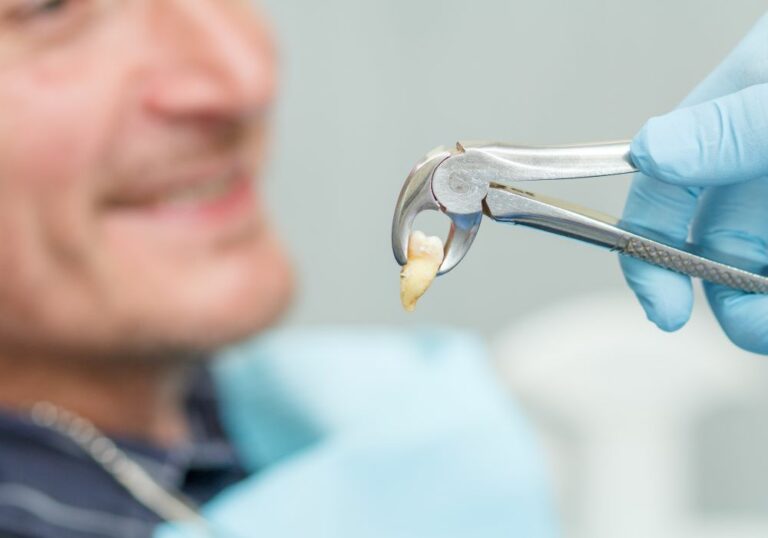An Explanation for the Apparent Movement of Teeth
Many people notice that their teeth seem to shift position and move forward as they age. This can be alarming, especially if you have had braces or other orthodontic work done to straighten your teeth. However, there are several reasons why your teeth may appear to move forward gradually.
Tooth Wear Can Create the Illusion of Forward Movement
As we age, our teeth undergo normal wear and erosion. The enamel surface gradually thins, and the biting edges flatten slightly. This natural process can make teeth seem less pronounced and protruded. As the edges flatten backward, the tooth may appear to be moving forward in the mouth. This effect is often more noticeable with the front incisors and canines.
Gum Disease Can Cause Teeth to Loosen
Gum disease, also called periodontal disease, affects the tissues and bone that support the teeth. As gums recede and supportive tissues break down, teeth can loosen and shift in position. In moderate to advanced gum disease, the bone loss around teeth allows them to drift forward slightly, giving the illusion that the actual teeth are moving. Treating gum disease by removing plaque and tartar buildup can halt this progression and stabilize the teeth.
Your Jawbone Structure Can Change Over Time
The size and shape of the jawbones can change gradually as we age, due to factors like tooth loss and gum recession. As the ridges of the jawbones remodel and resorb, this can alter the alignment of teeth and make them appear to move forward. Wearing dentures or missing multiple teeth accelerates bone resorption in the jaws. Bone loss from osteoporosis and other conditions can also thin the jawbones and lead to shifting teeth over time.
Braces Can Relapse Years Later
After braces are removed, teeth have a tendency to relapse back toward their original crooked positions. This is why most orthodontists recommend retainers to hold teeth in place. If you lost or stopped wearing your retainer, your teeth may have relapsed and moved forward again due to the elasticity of the gums. This relapse effect can occur many years after braces are removed. Wearing a new retainer can often move the teeth back into position again.
Inflammation Can Push Teeth Forward
Chronic inflammation in the gums and jaw joint can cause fluid buildup and swelling that pushes against the teeth. This pressure can gradually shift the position of teeth, and make them protrude more. Once the source of inflammation is treated, the fluid and swelling typically subside and teeth may shift back into normal alignment.
Factors That Contribute to the Perceived Movement of Teeth

There are several contributing factors that work together to create the appearance of forward-shifting teeth over time:
- Tooth wear and thinning enamel
- Loss of gum tissue and bone due to gum disease
- Jawbone resorption from missing teeth and bone loss
- Relapse of straightened teeth after braces
- Chronic inflammation and fluid pressure on teeth
The combined effects of these processes make teeth seem more prominent and protruded as we age. However, in most cases the teeth themselves are not actually moving through the bone. Their changing position is related to what is happening in the surrounding jaw, gum and bone tissues.
The Effects of Tooth Wear Over Time
Tooth wear occurs gradually as we chew and grind our teeth. Tiny bits of enamel get chipped off, causing the teeth to lose some of their bulk and fullness. This attrition is especially noticeable on the edges and tips of front teeth. As the enamel thins, the edges round off and flatten. This can make the teeth appear shorter. The shorter, flatter edges create the illusion that more of the tooth is visible and protruding past the lips. In reality, the whole tooth has not shifted – just the shape has changed through wear.
How Gum Disease Impacts Tooth Stability
Gum disease causes inflammation and bacterial overgrowth which destroys the tissues and bone holding teeth in place. As gums recede downward and supportive bone breaks down, teeth loosen and begin to shift. Mild loosening allows teeth to tip slightly in various directions. In more advanced disease states, the bone loss is so severe that teeth can actively drift out of position. They may extend further forward out of the jawbone or migrate backward toward the roof of the mouth. Unchecked gum disease will eventually lead to tooth loss.
Jawbone Changes Over Time
Our jawbones continue to undergo remodeling and resorption as we age. Bone cells remove tiny bits of mineral from the jaws and reshape the ridges. When back teeth are lost, the bone in those areas atrophies rapidly from lack of stimulation. The lower jaw especially will shorten and thin out. This process can alter the angle and alignment of the remaining teeth, making them seem more protruded. It also reduces the stability of teeth, allowing them to drift when chewing pressures are applied.
Why Teeth Relapse After Braces
Teeth are held in their new straightened positions after braces through the elasticity of gum tissue fibers. These fibers adapt to the new positions and essentially anchor the teeth there. However, the fibers still contain “memory” of the old crooked positions. If not held firmly by retainers, the fibers can eventually pull teeth back toward their former places. This slow relapse process can take years before it’s noticeable. But not wearing a retainer properly can definitely allow teeth to shift and move forward again.
How Inflammation Pressures Teeth Position
Chronic inflammation in the gums and jaw joints generates fluid buildup and swelling. This swelling exerts outward pressure on the teeth from all sides. Imagine blowing up a balloon inside the gum and bone around a tooth. That pressure has to go somewhere, so it gradually pushes the tooth in the path of least resistance. This is often outward, making the tooth look longer and more protruded. Eliminating the inflammatory source can allow tissues to return to normal and teeth to stabilize.
Risk Factors For Increased Tooth Movement

Certain factors can increase the likelihood of teeth appearing to move forward more readily:
- Aggressive gum disease causing significant bone loss
- Missing multiple back teeth without replacement
- Arthritis or TMJ inflammation affecting the jaw joints
- Osteoporosis or osteopenia leading to bone thinning
- Poor-fitting dentures that accelerate bone resorption
- Malocclusion (poor bite alignment) putting more pressure on certain teeth
- Bruxism (teeth grinding), which accelerates wear and loosening
- Lack of routine dental care and teeth cleanings
Recognizing and correcting these issues early on can help stabilize teeth and prevent unnecessary shifting. Making sure to wear retainers as directed after orthodontic treatment is also crucial for keeping straightened teeth in their new positions.
When To See Your Dentist About Shifting Teeth
If you notice your teeth are visibly moving and changing position, see your dentist promptly for an evaluation. Your dentist can:
- Determine if gum disease is present and begin treatment
- Take x-rays to look for bone loss around teeth
- Check for bite problems that may be putting unequal pressures on teeth
- Assess teeth for cracks or other damage that allows shifting
- Consider orthodontic options like braces or clear aligners if needed
- Provide you with a retainer if teeth have relapsed after previous braces
Don’t assume forward-moving teeth are untreatable. Many underlying problems like gum disease and bone loss can be corrected to stabilize or even regenerate lost support. Retainers can also move shifted teeth back into their ideal positions. The sooner you get evaluated, the more options will be available to stop further progression.
Preventing Unwanted Tooth Movement

While some natural tooth movement occurs with age, you can take proactive steps to minimize shifting and retain your smile:
- Maintain excellent oral hygiene to prevent gum disease
- Get regular dental cleanings and checkups
- Wear a nightguard if you grind your teeth
- Use denture adhesives if you wear full or partial dentures
- Wear your retainer as prescribed after braces
- Get missing teeth replaced to preserve the jawbone
- Manage health conditions like osteoporosis that thin the bones
- Avoid chewing hard foods that put excessive bite pressure on teeth
- Stop smoking, which increases gum disease risk
Making your oral health a priority can help counteract many forces that allow teeth to shift and protrude. Be vigilant about wearing retainers and treating gum disease. With proper care, your teeth should remain relatively stable for decades.
Key Takeaways: Why Teeth May Appear to Move Forward
- Tooth wear and thinning enamel reduces size, allowing more protrusion
- Gum disease causes bone loss, making teeth loose and drift
- Jawbone resorption from missing teeth alters the tooth-bone angle
- Stopping retainer use lets straightened teeth relapse and shift
- Inflammation and fluid cause swelling that presses on teeth
Frequently Asked Questions
Why do my front teeth look bigger and more crooked as I age?
Your front teeth likely appear bigger due to enamel thinning from wear over time. This makes the edges rounder and flatter, which makes them look shorter. More of the tooth structure is visible past the receding gums and worn edges. They may also appear crooked due to gum disease loosening teeth or orthodontic relapse after losing or breaking your retainer.
Can teeth move forward on their own without orthodontics?
Teeth normally cannot push themselves forward without some outside force, but they can drift forward passively due to bone loss from gum disease, osteoporosis, or missing back teeth. This looseness allows them to shift when chewing pressures are applied. They are essentially moving into the space created by lost bone and gums but cannot spontaneously move forward on their own.
Should I get braces again to pull my teeth back?
Braces could be an option if your teeth have relapsed significantly and you want to realign them. Clear aligners may also work in minor shifting cases. Be sure to discuss wearing a permanent retainer afterward to prevent repeat relapse. If gum disease and bone loss are present, those issues should be treated first or else teeth will simply shift again after braces.
Can teeth shift position after implant placement?
Dental implants fuse to the jawbone, so they cannot shift or drift on their own. However, if other teeth continue to loosen from gum disease or bone loss, they can shift around the firmly placed implants. Implants can provide a stable anchor for attaching bridgework if some teeth are missing. Keeping your gums healthy helps other teeth remain stable around the implants.
Should I be concerned if my teeth look slightly crooked now?
Slight changes in tooth alignment are normal as we age. But sudden noticeable shifting or loose teeth warrant a dental exam. This could signal a problem like gum disease, bite issues, or a need for a retainer. Don’t assume it’s untreatable. Many options exist to repair receding gums, stabilize loose teeth, and straighten teeth with clear aligner therapy. Addressing it now gives you more choices.







